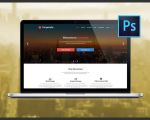
Why Long-Term Thinking Matters in Website Design
When I first started designing websites over a decade ago, I focused mostly on aesthetics—color palettes, layouts, animations. But as I began working with clients whose businesses depended on sustained online performance, I realized beautiful design alone wasn't enough. A truly successful website needs to serve strategic business goals for the long haul.
It’s easy to get caught up in trends—bold fonts, flashy sliders, parallax scrolling—but what happens when trends fade? I’ve seen businesses invest heavily in trendy designs only to find themselves redoing everything just two years later. That’s why every site I build today is crafted with one core question in mind: How will this support the business five years from now?
1. Understanding the Business Vision
1.1 Collaborating With Stakeholders
Before writing a single line of code, I sit down with business owners and decision-makers to understand their long-term goals. Are they expanding? Targeting new demographics? Launching new products? A website is more than a digital brochure—it’s a living tool that should evolve with the company.
1.2 Mapping Out Growth Milestones
I like to map out where the business plans to be in 6 months, 1 year, 3 years, and beyond. This helps shape not just the design, but also the infrastructure. For example, if e-commerce is on the roadmap, we plan ahead for scalable product databases, intuitive navigation, and secure payment systems from day one.
2. Designing With Scalability in Mind
2.1 Flexible Architecture
One of the biggest mistakes I see in failed websites is rigid architecture. I've worked with clients whose sites couldn’t handle new content types or scale with traffic. To avoid this, I use modular design systems and CMS platforms like WordPress or headless CMS setups that allow for easy expansion.
2.2 Reusable Design Components
We create design systems that include reusable components—like content blocks, product cards, and call-to-action banners. This not only ensures visual consistency but also speeds up development when it’s time to scale or redesign parts of the site.
3. Crafting an Exceptional User Experience
3.1 Customer Journey Mapping
Great design starts with empathy. I spend time researching how different types of users interact with the site. We create detailed journey maps to understand where users are dropping off, what questions they have, and how we can make their experience smoother.
3.2 Performance and Accessibility
I once had a client lose a major contract because their website was too slow to load on mobile. That was a wake-up call. Today, we obsess over performance—minimizing scripts, optimizing images, and ensuring accessibility for all users, including those with disabilities.
4. Making SEO a Priority From the Start
4.1 Semantic HTML and Clean Code
SEO isn’t something we tack on at the end. It’s baked into every layer of the design. From using proper heading hierarchies to writing clean, semantic HTML, every element is built with search engines in mind.
4.2 Content Strategy Aligned With Search Intent
I work closely with content strategists to create pages that answer real user questions. We use tools to find high-intent keywords and ensure each page is not only informative but also aligned with what people are actually searching for.
5. Story From the Trenches: A Website That Tripled Revenue
A couple of years ago, I redesigned a website for a small eco-friendly cleaning brand in Colorado. Their old site was beautiful but confusing to navigate, and it wasn’t ranking on Google. After our redesign, which included simplifying the layout, improving page load times, and implementing a strong content plan, their traffic doubled in six months—and their revenue tripled in a year.
Their CEO told me, "We’re not just proud of our website anymore—it’s the heartbeat of our business." That’s the kind of impact long-term thinking in design can make.
6. Keeping Your Website Future-Proof
6.1 Regular Updates and Testing
No website is ever ‘finished.’ We set up quarterly reviews where we test site performance, analyze analytics, and make iterative improvements. We also run A/B tests on calls to action and page layouts to ensure we’re always improving.
6.2 Embracing Feedback Loops
Feedback from users is gold. We incorporate user feedback loops using tools like Hotjar or Google Optimize to get real-time insights and continuously refine the experience.
7. Final Thoughts From My Journey
Designing a website that supports long-term business goals isn’t about flashy visuals—it’s about strategic decisions rooted in understanding, planning, and care. Every project I take on now begins with this ethos: design not just for today, but for the business you want to become. If you’re thinking about building or redesigning your site, I’d recommend starting with one simple question: Will this site still serve me three years from now?
And if you need help with making that vision a reality, you can always check out what we offer at SitePoint 24.








